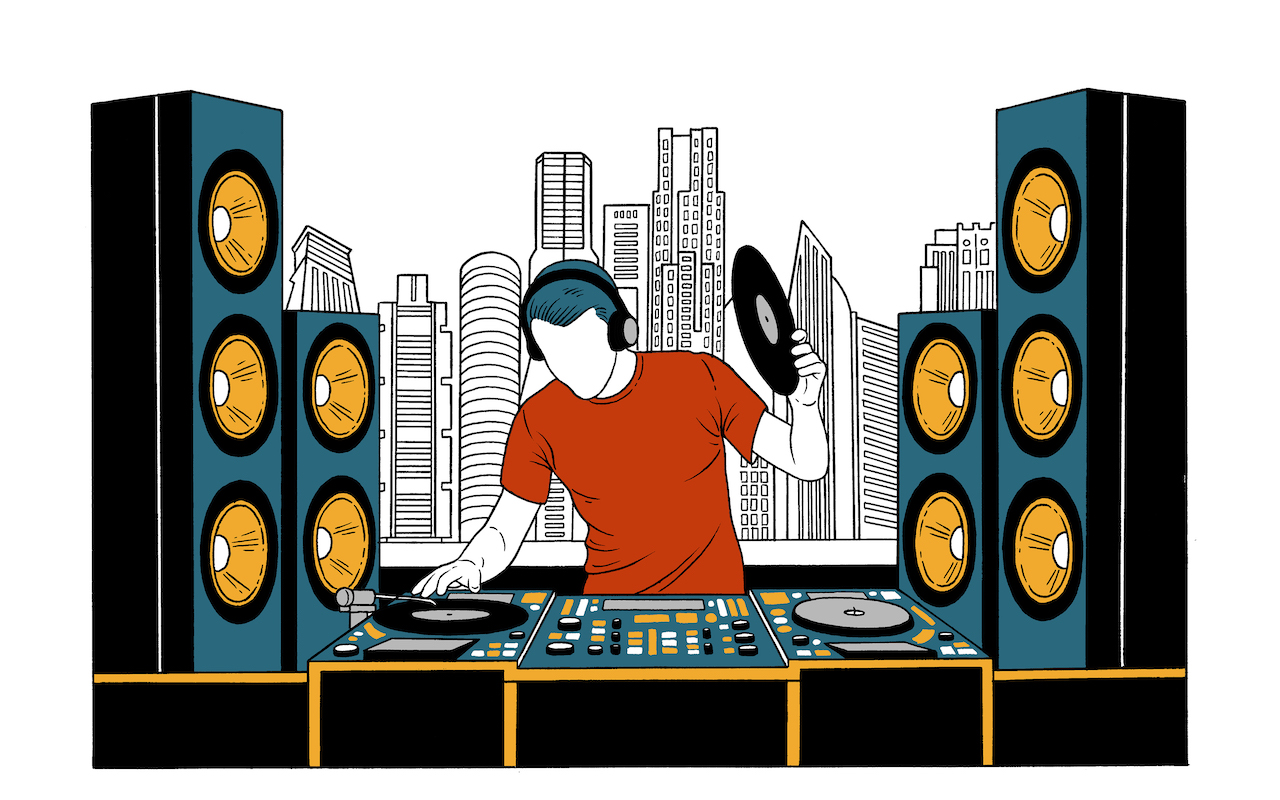
Electronic music culture has always been Western-centric. I’ve been a victim and prisoner of that bias as well. I love it, but I became blinded by my lack of belief that we have things in this part of the world, too. A decade ago, I would warm up for a DJ from somewhere else. You could be just as good as the main act, but that perception of worth is so different.
Europe has traditionally been Darker Than Wax’s core market, but this year, the priority has been to secure relationships between collectives and affiliates in Asia. We’re getting more regional DJs to come here, as well as establishing links with clubs in Jakarta, Bangkok, Chengdu, Shanghai, Hangzhou and a couple other places in China. A cross-pollination is starting.
For the longest time, there just wasn’t a concerted effort to connect the dots. I think the Asian mentality is to just grind down and do your own thing first before reaching out to others. But over the past two or three years, there have been small, organic pop-up and DIY spaces opening. In Singapore, the proliferation of venues such as Intermission Bar at Golden Mile, Kilo Lounge and HQ suggests that things are happening.
 More than just spaces, the younger generation in this part of the world actually expects you as a selector to play more Asian music these days. There’s an awareness that we have great things right here that we should be proud of. For instance Artifacts, a night I did at Intermission Bar recently, was about resurfacing Asian jams such as Malaysian-Singaporean funk, deep a-go-go and disco.
More than just spaces, the younger generation in this part of the world actually expects you as a selector to play more Asian music these days. There’s an awareness that we have great things right here that we should be proud of. For instance Artifacts, a night I did at Intermission Bar recently, was about resurfacing Asian jams such as Malaysian-Singaporean funk, deep a-go-go and disco.
In Hong Kong and Shanghai, collectives like YETI OUT and Eating Music are doing the same thing – bringing experimental electronic music, trap and rap music from cities such as Chengdu and Xiamen, empowering local communities and reaching audiences in the United States and Europe.
At the same time, whether it’s a big performance, a festival or a little show, you have to make sure that space is an experience. Music is instinctive, but it’s also spatial and methodical – very much like architecture. Space retains your experiences and senses, but it’s also very mathematical and structural.
If you look at what Drake and Kanye West are doing – with talented art directors like Willo Perron, their sets are so spatial. People could easily listen to music at home, so you have to create a setting that they will remember.
“There’s an awareness that we have great things right here we should be proud of”
There also needs to be more dialogue between organisers and the government to open up more spaces. We need flexibility in order to grow. A few months ago, we closed the street outside Chye Seng Huat coffee shop in Singapore’s Jalan Besar area for the first-ever BREW block party. That was a collaboration between us and the Urban Redevelopment Authority.
We brought in guest selector UNOS from Belgium, laid out modular crates, collaborated with a photographer to document urban life around Jalan Besar and projected these collages onto the boundary walls of coffee shop, creating a strong visual backdrop for the party. Though it rained for two hours, there were eventually 700 people from different demographics present.
By creating memorable spaces and fostering collaboration, we can bring our sound culture to a bigger level. We can show that there’s an economy around the electronic music scene in Asia.
Illustrations by Stuart Patience
SEE ALSO: Opinion: How streetwear has impacted the fashion trends of the world
This article was originally published in the January 2020 issue of SilverKris magazine
The post Opinion: The electronic music scene in Asia is gaining recognition amongst the big players appeared first on SilverKris.
from SilverKris
No comments:
Post a Comment